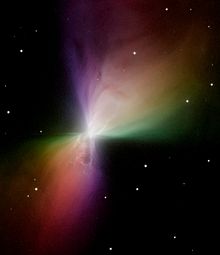 Dark Energy is the energy that helps the Universe to accelerate and to move galaxies to move away from each other. Dark Energy is one of the most believed theory which explains the expansion of the Universe at a high rate.
Dark Energy is the energy that helps the Universe to accelerate and to move galaxies to move away from each other. Dark Energy is one of the most believed theory which explains the expansion of the Universe at a high rate.In short, Dark Energy helps in the functioning of the Universe.
At the early stages of The Big Bang, the explosion should have been slowed down by the force of gravity. But, the Hubble Telescope noted significant increase in the speed of expansion of the present Universe when compared to the early stages.
So what's causing the acceleration in the expansion of the Universe? Yeah, some call it Dark Energy.
 |
| Dark Matter |
Much like it's name suggests, it's filled with dark stuff. Yeah, we haven't seen it. We just know it exists.
In our Universe, we have 4.9% of matter (You, me, stars, planets, blackholes etc), 26.8% Dark matter (Baryon based clouds, etc) and 68.3% dark energy.
Dark Energy is like, anti-gravity. Gravity pulls objects closer but the Dark Energy pushes two galaxies away from each other.
In our Universe, we have 4.9% of matter (You, me, stars, planets, blackholes etc), 26.8% Dark matter (Baryon based clouds, etc) and 68.3% dark energy.
Dark Energy is like, anti-gravity. Gravity pulls objects closer but the Dark Energy pushes two galaxies away from each other.

.jpg)
.jpg)
.jpg)
.jpg)
.jpg)

.jpg)






.jpg)
.jpg)
.jpg)














